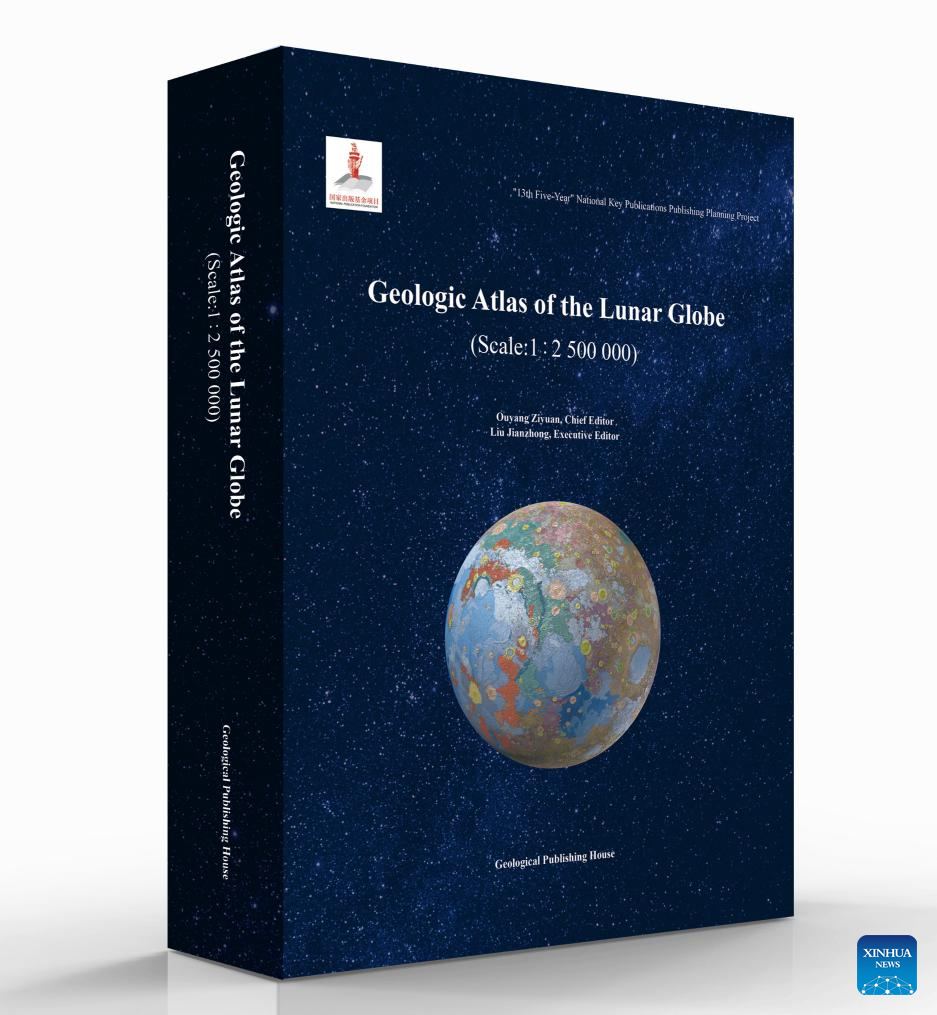Multiple space agencies are looking to send crewed missions to the Moon’s southern polar region in this decade and the next. Moreover, they intend to create the infrastructure that will allow for a sustained human presence, exploration, and economic development. This requires that the local geography, resources, and potential hazards be scouted in advance and navigation strategies that do not rely on a Global Positioning System (GPS) developed. On Sunday, April 21st, the Chinese Academy of Sciences (CAS) released the first complete high-definition geologic atlas of the Moon.
This 1:2.5 million scale geological set of maps provides basic geographical data for future lunar research and exploration. According to the Institute of Geochemistry of the Chinese Academy of Sciences (CAS), the volume includes data on 12,341 craters, 81 impact basins, 17 types of lithologies, 14 types of structures, and other geological information about the lunar surface. This data will be foundational to China’s efforts in selecting a site for their International Lunar Research Station (ILRS) and could also prove useful for NASA planners as they select a location for the Artemis Base Camp.

Ouyang Ziyuan and Liu Jianzhong, a research professor and senior researcher from the Institute of Geochemistry of the CAS (respectively), oversaw these efforts. Since 2012, they have led a team of over 100 scientists and cartographers from relevant research institutions. The team spent more than a decade compiling scientific exploration data obtained by the many orbiters, landers, and rovers that are part of the Chinese Lunar Exploration Program (Chang’e), and other research about the origin and evolution of the Moon.
According to the CAS, the atlas includes an “upgraded lunar geological time scale” for “objectively” depicting the geological evolution of the Moon, including the lunar tectonics and volcanic activity that once took place. As a result, the volume could not only be significant in terms of lunar exploration and site selection. Still, it could also improve our understanding of the formation and evolution of Earth and the other terrestrial planets of the Solar System – Mercury, Venus, and Mars. As Jianzhong indicated in a CAS press release,
“The world has witnessed significant progress in the field of lunar exploration and scientific research over the past decades, which have greatly improved our understanding of the moon. However, the lunar geologic maps published during the Apollo era have not been changed for about half a century and are still being used for lunar geological research. With the improvements of lunar geologic studies, those old maps can no longer meet the needs of future scientific research and lunar exploration.”

Jianzhong also claims that the atlas could help inform future sample collection on the Moon. This includes the Chang’e-6 mission (consisting of an orbiter and lander), which launched this past Friday (May 3rd). The orbiter element will reach the Moon in a few days, and the lander element is expected to touch down the far side of the Moon by early June. By 2026, it will be joined by the Chang’e-7 mission, consisting of an orbiter, lander, rover, and a mini-hopping probe. While Chang’e-6 will obtain lunar soil and rock samples, Chang’e-7 will investigate resources and obtain samples of water ice and volatiles.
According to Gregory Michael, a senior scientist from the Free University of Berlin, the release of this atlas represents the culmination of decades of work, and not just by Chinese scientists:
“This map, in particular, is the first on a global scale to utilize all of the post-Apollo era data. It builds on the achievements of the international community over the last decades, as well as on China’s own highly successful Chang’e program. It will be a starting point for every new question of lunar geology and become a primary resource for researchers studying lunar processes of all kinds.”
Aside from updating data on lunar features and geology, the new maps reportedly double the resolution of the Apollo-era maps. These maps were compiled by the US Geological Survey in the 1960s and 70s using data from the Apollo missions. Among them was a global map at the scale of 1:5,000,000, though other regional maps and those that showed the terrain near the Apollo landing sites were of higher resolution. Geological and geographical information on the Moon has advanced considerably since then, requiring updated maps that reflect the objective of returning to the Moon with the intent to stay.

In addition to the Geologic Atlas of the Lunar Globe, the CAS also released a book called Map Quadrangles of the Geologic Atlas of the Moon. This document includes 30 sector diagrams that collectively form a visualization of the entire lunar surface. Both are available in Chinese and English, have been integrated into a digital platform called Digital Moon, and will eventually become available to the international research community.
Further Reading: CAS

